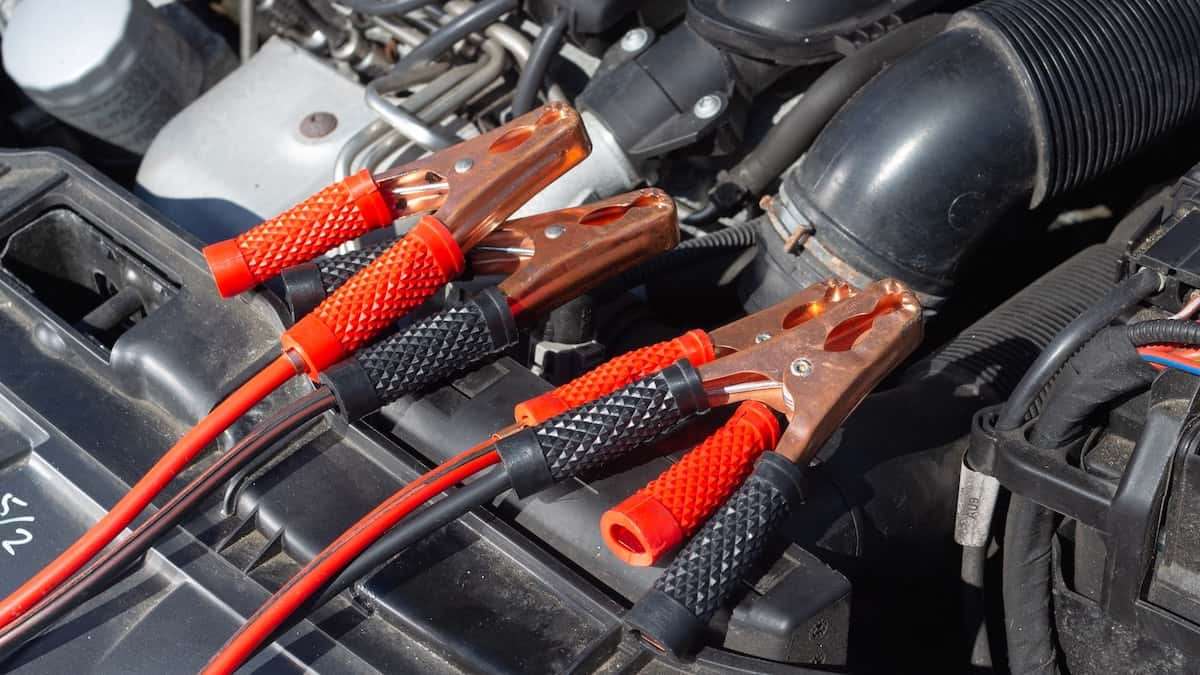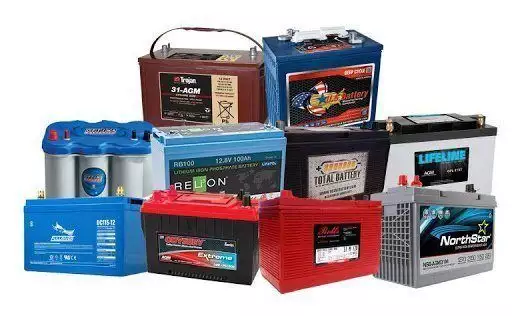The Essential Guide to Maintaining Spark Plugs
Spark plug maintenance is crucial for optimal engine performance and fuel efficiency. Regular inspection and replacement are key.
Introducing the Essential Guide to Maintaining Spark Plugs: Proper care of spark plugs is vital for ensuring smooth engine operation. Neglecting spark plug maintenance can lead to poor fuel economy, engine misfires, and overall decreased performance. This guide will cover the basics of spark plug maintenance, including inspection intervals, signs of wear and when to replace them.
By following these tips, you can extend the life of your spark plugs and keep your engine running smoothly. Let’s dive into the details of maintaining spark plugs to ensure peak performance of your vehicle.
Importance Of Spark Plug Maintenance
Spark plug maintenance is crucial for optimal engine performance and fuel efficiency. Regularly checking and replacing worn-out spark plugs can prevent engine misfires, improve ignition, and extend the overall lifespan of the vehicle. Ignoring this maintenance can lead to decreased power, rough idling, and even engine damage.
What Are Spark Plugs?
Spark plugs are an essential component of your vehicle’s ignition system. They are responsible for igniting the air and fuel mixture in the combustion chamber of your engine, creating the necessary power to start your car and keep it running smoothly. Simply put, without functioning spark plugs, your vehicle would not be able to start or operate efficiently.
Spark plugs consist of a metal shell, an insulator, and a central electrode. The spark plug is screwed into the cylinder head and is in direct contact with the combustion chamber. As the name suggests, the plug produces a spark, which ignites the compressed air and fuel mixture, triggering the internal combustion process.
Signs Of Spark Plug Issues
Keeping your spark plugs in good condition is crucial for the overall performance of your vehicle. Ignoring spark plug maintenance can lead to a range of problems, including reduced fuel efficiency, engine misfires, and even engine damage. Therefore, it’s important to be aware of the signs that indicate potential spark plug issues.
Here are some common signs that your spark plugs may need attention:
- Difficulty starting your vehicle
- Engine misfires or rough idling
- Reduced acceleration or power
- Increased fuel consumption
- Engine hesitation or stumbling
- Black, sooty deposits on the spark plugs
- Excessive engine vibration
If you notice any of these signs, it’s essential to address the spark plug issue promptly. Neglecting spark plug maintenance can lead to further damage to your vehicle’s engine and a decrease in overall performance.
Now that you understand the importance of spark plug maintenance and the signs of potential issues, it’s time to learn how to properly maintain your spark plugs to keep your vehicle running smoothly. Stay tuned for our upcoming guide on maintaining spark plugs to ensure optimal engine performance and longevity.

Credit: www.kbb.com
How To Inspect Spark Plugs
Spark plug inspection is an essential part of maintaining your vehicle’s performance. Learn how to properly inspect spark plugs with this comprehensive guide. With easy-to-follow steps, you can ensure that your spark plugs are in good condition and optimize the efficiency of your engine.
Gather Necessary Tools
Before inspecting the spark plugs, gather necessary tools: spark plug socket, ratchet, spark plug gap gauge.
Step-by-step Inspection Process
- Begin by locating the spark plugs; they are usually on the top of the engine.
- Disconnect the spark plug wire and use the spark plug socket to remove the plug.
- Inspect the spark plug for signs of wear or damage such as corrosion, erosion, or deposits.
- Check the spark plug gap with a gap gauge; ensure it meets the manufacturer’s specifications.
- Replace any worn or damaged spark plugs with new ones and reinstall them carefully.
Cleaning And Gapping Spark Plugs
Proper maintenance of spark plugs is essential for the overall health of your vehicle. Cleaning and gapping spark plugs are crucial steps in ensuring optimal performance and fuel efficiency.
Cleaning Procedure
- Remove the spark plugs from the engine using a socket wrench.
- Inspect the spark plugs for dirt, oil deposits, or damage.
- Clean the spark plugs using a wire brush and a dedicated cleaner.
- Ensure the electrodes are clean and free from any debris.
- Allow the spark plugs to dry completely before reinstallation.
Gapping Procedure
- Use a spark plug gap tool to measure the gap between the electrodes.
- Adjust the gap by carefully bending the side electrode.
- Refer to your vehicle’s manual for the correct gap specifications.
- Check the gap again after adjustment to ensure accuracy.
By following these cleaning and gapping procedures regularly, you can improve the performance and efficiency of your vehicle’s engine.

Credit: www.torquenews.com
Replacing Spark Plugs
Ensure your vehicle runs smoothly by regularly replacing spark plugs to maintain optimal engine performance. Follow this essential guide for easy maintenance and improved fuel efficiency. Trust this simple routine to keep your car running in top condition for miles to come.
Replacing spark plugs is a crucial aspect of maintaining your vehicle’s overall performance. Over time, spark plugs can wear out or become fouled, leading to decreased fuel efficiency and engine misfires. In this section, we will explore when to replace spark plugs and provide a step-by-step guide for the replacement process.
When To Replace
Knowing when to replace your spark plugs is essential to keep your engine running smoothly. Here are a few indicators that it may be time for new spark plugs:
- High mileage: If your vehicle has accumulated a high number of miles, it is recommended to replace the spark plugs as part of your routine maintenance.
- Decreased fuel efficiency: If you notice a significant drop in your vehicle’s fuel efficiency, it could be due to worn-out spark plugs.
- Engine misfires: Irregular engine misfires or a rough idling sensation can be a sign of faulty spark plugs that need to be replaced.
- Difficulty starting the engine: If you experience difficulties when starting your vehicle, it might be a result of worn-out spark plugs.
By keeping an eye out for these signs, you can ensure that your spark plugs are replaced at the right time, preventing further damage to your engine and maintaining optimal performance.
Step-by-step Replacement Process
Replacing spark plugs can be a straightforward process with the right tools and knowledge. Here is a step-by-step guide to help you replace your spark plugs:
- Ensure the engine is cool: Before starting the replacement process, make sure the engine is completely cool. This will prevent any burns and ensure safe working conditions.
- Locate the spark plugs: Consult your vehicle’s manual to identify the exact location of the spark plugs. In most cases, they are located on the top of the engine underneath a plastic cover.
- Remove the connection wires: Gently remove the wires attached to the spark plugs. Take note of the order in which they are connected to avoid confusion during reinstallation.
- Remove the old spark plugs: Use a spark plug socket to unscrew the old spark plugs counterclockwise. Be cautious not to drop any debris into the empty spark plug wells.
- Check the new spark plugs: Inspect the new spark plugs for any signs of damage or defects. It is crucial to use the correct spark plug type and size as recommended by the manufacturer.
- Install the new spark plugs: Carefully thread the new spark plugs into the spark plug wells by hand. Once they are snug, use a torque wrench to tighten them to the manufacturer’s specifications.
- Reattach the connection wires: Reconnect the wires to the appropriate spark plugs based on the order you noted earlier. Ensure they are securely fastened.
- Repeat the process: Repeat the above steps for each spark plug in your vehicle.
- Replace the cover and test: Once all spark plugs are replaced, reattach the plastic cover (if applicable). Start your engine and check for any irregularities or misfires.
By following these steps, you can effectively replace your spark plugs and maintain the overall performance of your vehicle.
Tips For Maintaining Spark Plugs
When it comes to maintaining spark plugs, it’s essential to follow a set of tips to ensure the overall performance of your vehicle. By using the right spark plug and adhering to a regular maintenance schedule, you can prolong the life of your spark plugs and optimize the engine’s efficiency.
Using The Right Spark Plug
Using the right spark plug for your vehicle is crucial for optimal performance. Different engines require specific types of spark plugs, so it’s important to consult your owner’s manual or seek the advice of a professional mechanic. Choosing the correct spark plug ensures proper ignition and efficient combustion, ultimately maximizing fuel economy and overall engine performance.
Regular Maintenance Schedule
Adhering to a regular maintenance schedule is imperative for the longevity of spark plugs. This includes regularly inspecting and cleaning or replacing spark plugs according to the manufacturer’s recommendations. Ignoring routine maintenance can lead to poor engine performance, increased fuel consumption, and potential damage to other engine components. Establishing a consistent maintenance routine is key to sustaining the efficiency and reliability of your vehicle’s ignition system.

Credit: www.progressive.com
Frequently Asked Questions For The Essential Guide To Maintaining Spark Plugs
What Are The Maintenance Procedures For Spark Plugs?
To maintain spark plugs, inspect and replace as needed every 30,000 miles. Follow manufacturer’s recommendations for gap setting. Clean with a wire brush and check for wear. Use dielectric grease when reinstalling.
How Do I Prolong The Life Of My Spark Plugs?
To prolong the life of your spark plugs, follow these guidelines: 1. Replace them at recommended intervals. 2. Regularly check and clean them. 3. Avoid letting your engine misfire. 4. Use high-quality fuel and oil. 5. Keep your engine properly tuned.
What Should Be The First Step In Servicing Spark Plugs?
The first step in servicing spark plugs is to disconnect the car battery. This prevents electrical shocks and ensures safety.
How Do You Service Spark Plugs?
To service spark plugs, remove the ignition coils, unscrew the old plugs, then install and tighten the new ones. Reattach the ignition coils and start the engine to ensure proper functionality. Regular maintenance ensures optimal performance and fuel efficiency.
Conclusion
Maintaining spark plugs is crucial for the smooth operation of your vehicle. Regular cleaning and inspection can prevent misfires, improve fuel efficiency, and extend the lifespan of your engine. By following the tips in this guide, you can ensure that your spark plugs remain in optimal condition.
Remember to check for dirt, wear, and proper gap alignment regularly. With proper maintenance, you can keep your engine running smoothly and enjoy a comfortable driving experience.

